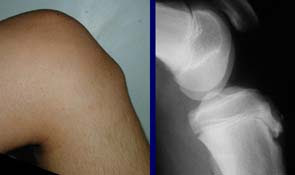Achilles Tendon Injury
Achilles tendon is located at the back of the leg near the heel. It makes up the confluence of the posterior superficial leg muscles and is regarded as one of the strongest and largest tendon in the human body. Despite its strength, it is frequently subjected to injury and accounts for one of the most common sports injuries, an Achilles tendinopathy. It is important to distinguish between the type of tendon injuries associated with the Achilles.
An Achilles tendinopathy (AT) involves localized pain, swelling near the back of the leg near the heel with impaired physical function. There are two types based on location of injury: the mid tendon, and the distal insertional attachment. An Achilles tendinopathy is usually found in physical activities such as running, sprinting, and jumping, which are common athletic movements in a training program. Some factors to consider which may lead an athlete to higher risk of an Achilles injury include: leg length discrepancy, hyperpronation (flat feet), limited ankle mobility, various health systemic conditions, overloading the tendon, over training, excessive hill training, training on hard surfaces, increasing millage without progressive adaptation, poor shock absorption, and poor choice of footwear. Of course, the latter most risks are potentially avoidable with proper strength and training programs, whereas the former need medical guidance.
When one sustains a Achilles Tendon injury, consistent with a tendinopathy, it is important to consider rehabilitation options and medical management immediately, otherwise if the source of pain persists, the area of degeneration of the tear may worsen overtime, and can lead to an Achilles Tendon rupture (briefly discussed below). While there are no gold standards to treatment, research has suggested these non-operative managements to be helpful: initial rest, walking boot with modified activity, orthotics with specific modifications, graduated heel lifts/wedges that reduce dorsiflexion of the ankle, low level laser therapy, eccentric exercise program, and shockwave therapy, deep friction massage and tendon mobilization. Between a mid tendon and an insertional Achilles tendinopathy, there are specific eccentric exercises that studies have shown to be helpful for an individual’s recovery which will further improve healing and reduce the likelihood of re-injury, or potential rupture if left untreated.

In some cases, an Achilles tendon can undergo a traumatic injury in which the tendon can rupture, causing significant deficits. While one would immediately jump to the conclusion that surgery is automatically necessary, advances in non-operative management for acute Achilles tendon ruptures are on the rise. There has been a common consensus in literature to reduce the need to intervene with surgery in Achilles tendon ruptures, where functional outcomes show that there are similar results with pain management and function in the presence of rehabilitation. It appears that early loading has been shown to decrease tendon elongation, improve mechanical properties, and improve functional outcomes. Research has shown that a stepwise progression of tendon loading with exercise, working within tolerable ranges of motion, weaning off mobilizations, and advanced exercise and proprioceptive exercises are all helpful in post injury management.
In all regards, the Achilles tendon, one of the most powerful and strongest tendons in the human body can succumb to injury, and more often in sport related incidents such as running and jumping. It is important to consider rehabilitation options in non-operative management first, as research shows significant results to improving outcome and function when addressed quickly. Next time you, your athlete or loved one complains of pain in the heel/lower part of the leg, be sure to get it checked out!

Dr. Nourus Yacoub, DC
Medical Director and Chiropractor
Royal Chiropractic and Sports Injury Clinic
References
Alfredson H. and Cook J. A treatment algorithm for managing Achilles tendinopathy: new treatment options. British Journal of Sports Medicine. 2007 Apr; 41(4): 211–216.
Shapiro E, Grande D, and Drakos M. Biologics in Achilles tendon healing and repair: a review. Curr Rev Musculoskelet Med (2015) 8:9–17.
Li, H and Hua H. Achilles Tendinopathy: Current Concepts about the Basic Science and Clinical Treatments. BioMed Research International (2016) Volume 2016, 1-9.


 Every elite athlete knows that an effective warm-up is an important tool in preventing injury and improving performance. I would like to introduce to you the importance of a warm up, why it is important to have both a static and dynamic component to warm ups and briefly touch on today’s research.
Every elite athlete knows that an effective warm-up is an important tool in preventing injury and improving performance. I would like to introduce to you the importance of a warm up, why it is important to have both a static and dynamic component to warm ups and briefly touch on today’s research.

 In
In 
